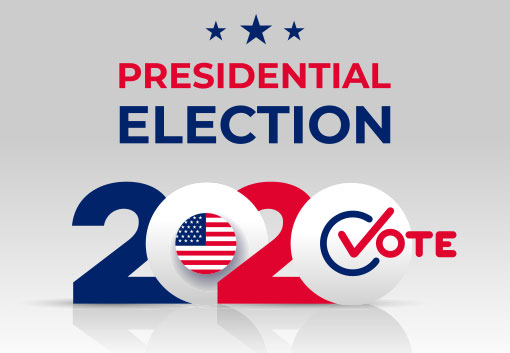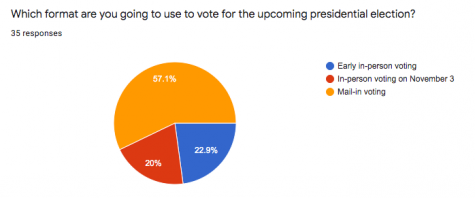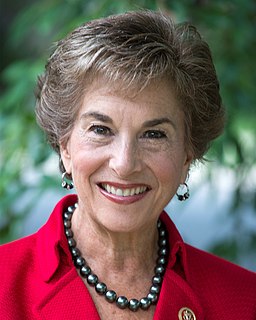Politics 101: Your guide to navigating the 2020 Presidential Election

Image credit: Christopher Newport University
Election Day is just a few short days away, on November 3. In January, either Donald Trump or Joe Biden will be delivering their Inauguration Address to the American people on the West Front of the U.S. Capitol Building. Which candidate will be the next President of the United States? Stay tuned and find out. Until then, keep a close watch on this electoral map.
Primaries and caucuses. The Electoral College. 270 votes to win. Do these terms sound familiar? If not, here’s an informative road map for guiding the leaps and hurdles of this year’s wild Presidential Election.
Step 1: Primaries and Caucuses
In the US voting system, there are two rounds of voting generally every two and four years. First, a primary or a caucus is held. During those events, voters pick a party nominee. For example, in a Democratic primary, voters would often pick among Democratic candidates for an office. The winner of that election then goes on to run in the general election against the nominees of the other parties.
But what is the difference between a primary and a caucus?
A caucus is a meeting of party leaders or members to select candidates and establish the party’s policies on specific issues. Today, caucuses are open to anyone who is a member of the party and registered to vote. These members meet to decide on who they will recommend for nomination at their party’s convention. They also discuss the party platform and organize election volunteers.
Caucuses are held less frequently than primaries in states like Iowa, Nevada, North Dakota, and Wyoming. They serve a similar purpose to primaries but instead of the general public having the final say in the selection of the candidates, the party members themselves are bestowed with that power.
A primary is like a preliminary election in which voters of each party nominate candidates for office. Voters go to polling stations and cast their ballot for who they want to be the candidate for their party in the general election.
Today, most states use primaries to decide on candidates. Like caucuses, primaries are used to decide on the candidates for local, state, and federal offices. Many states, from New Hampshire to Texas, have what are called open primaries. That means that voters can vote for the nominee of any party, regardless of whether they are registered with that party or not. For example, a Republican in Texas could vote for the Democratic presidential nominee. Other states, such as Pennsylvania, have closed primaries. This means that only voters registered with the party can vote for the party nominee.
Other states have partially open primaries, partially closed primaries, or other systems called “jungle primaries” where candidates all run on the same ticket regardless of their party. The primaries held on Super Tuesday, typically in March, are also considered very important. On Super Tuesday, a lot of primaries or caucuses for the presidential election are held across the states, often over 20 of them. A candidate who wins the early primaries and Super Tuesday is in great shape going to the nominating convention.
Step 2: National Conventions and General Election
What happens after presidential primaries and caucuses? The preferences of the voters are taken into account via caucuses and primaries and from there, each party proceeds to hold what is then known as a national convention.
A political convention is a meeting of a political party usually to select party candidates and party platforms. Generally, a political convention refers to the presidential nominating conventions of the two major U.S. political parties: the Democratic National Convention and the Republican National Convention. However, several smaller U.S. parties have also been known to select nominees by convention, including the Green Party, Socialist Party USA, Libertarian Party, and Constitution Party.
During the convention, the delegates who have been chosen from the primaries and caucuses from each state vote for a presidential nominee. Each political party establishes rules for participation in the convention. Every U.S. state is given a number of voter representatives, known as delegates and the size of each delegation is determined by each state’s population.
The purpose of a political convention is to select the party’s nominee for President of the United States. The convention also adopts a statement of party principles and goals called a platform, and sets the rules for the party’s electoral activities. The candidate who wins the most votes in the primaries and caucuses wins their party’s nomination. Once the presidential nominees are named by each party, these candidates then go on to run in the presidential general election. This election is held every four years on the first Tuesday in November: Election Day.
Step 3: Election Day/270 votes to win
Election Day. A day so important that according to TimeOut, Illinois Governor JB Pritzker declared it an official state holiday, meaning that all K-12 schools, post-secondary schools, and select businesses will get the day off. You may remember sitting in front of your TV screen four years ago, eagerly watching to see whether Republican nominee Donald Trump or Democratic candidate Hilary Clinton had won the 2016 presidential election. But what exactly is all the fuss about?
The American presidential elections are always held on the first Tuesday in November. This year it is scheduled for Tuesday, November 3. Americans vote for people called electors in their state who are supporting the candidate they want to become president. This process is called the electoral college. The more people who live in a state, the more electors there are for that state. So California for example, with a population of 38.8 million, has 55 votes while Delaware, with a smaller population of 936,000, has just three votes.
There are currently 538 electors in total, corresponding to the 435 Representatives and the 100 Senators, plus the three additional electors from the District of Columbia. Therefore, out of the total 538 electoral votes, earning 270 or more, or just over 50% of the total votes, means a candidate has won the presidential election. That’s where the phrase “270 votes to win” comes from.
Now as you know, there are multiple ways for voters to cast their ballots this election. Here is a representation of how Niles North seniors and faculty/staff members are voting this year:


Aiden is a senior who serves as the Editor-in-Chief and News Editor of North Star News. Since first joining the staff during his freshman year, he has...






